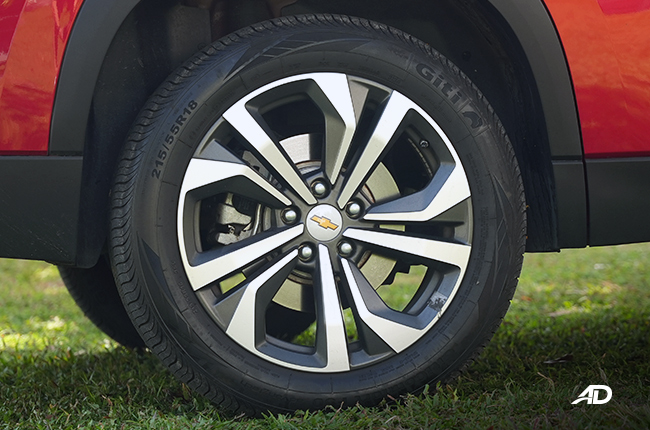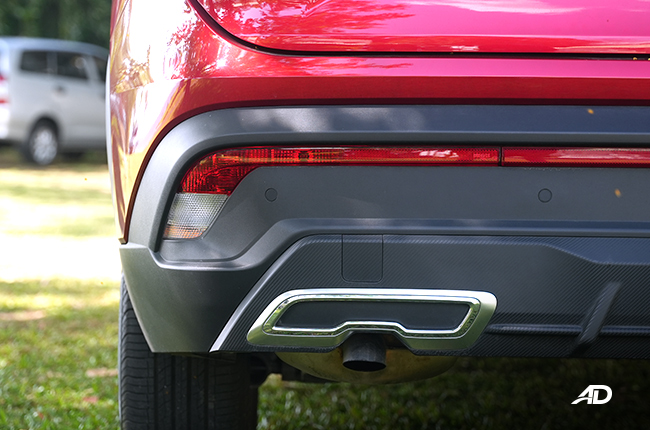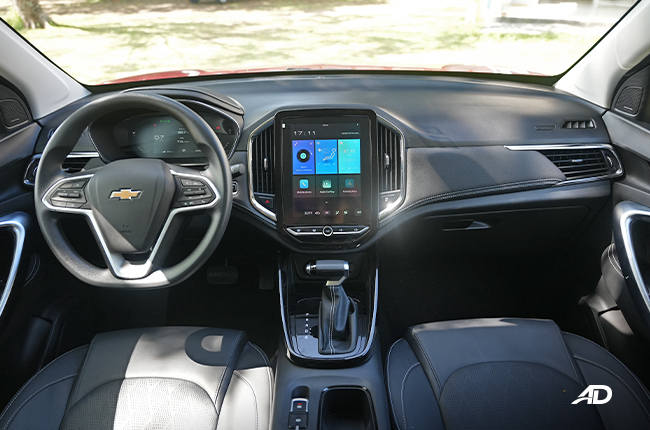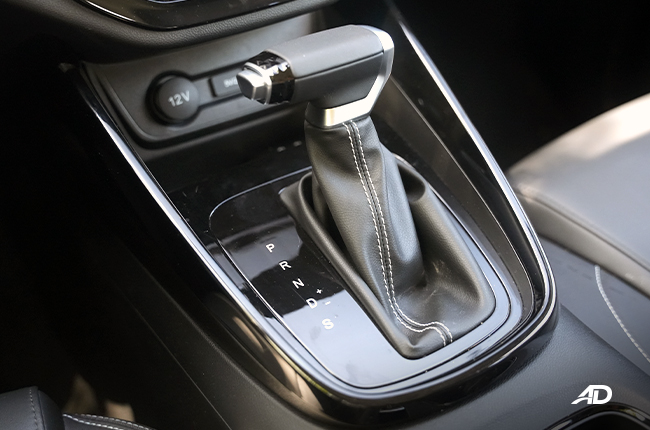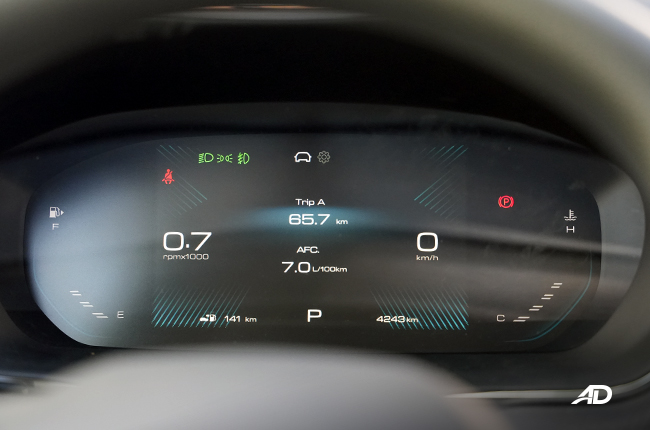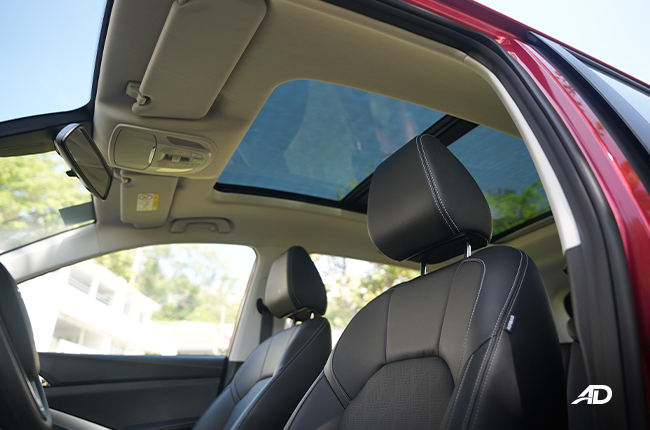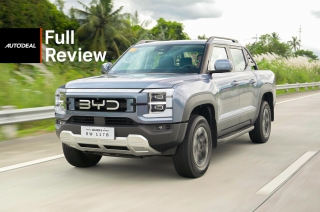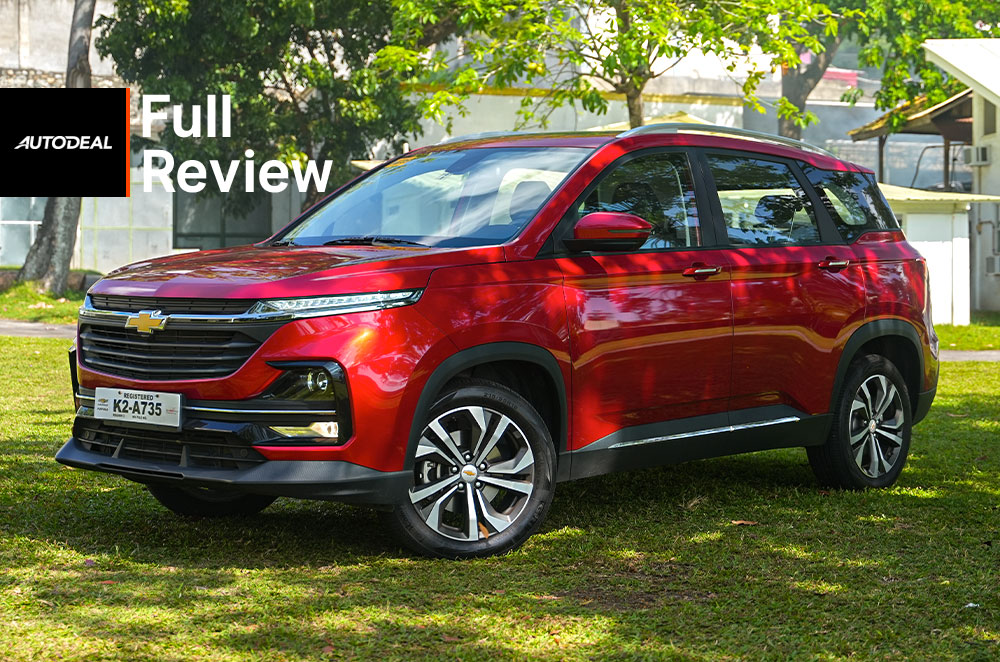
After the Spin was taken off the market, Chevrolet was without a seven-seater MPV offering in the country for a time. For a while, the brand’s lineup mainly consisted of small crossovers, hatchbacks, sports cars, and the big, beastly SUVs like the Tahoe and Suburban.
Last year, however, they re-entered the MPV market and simultaneously revived a well-known nameplate: the Captiva. Now featuring a blend of crossover and MPV styling, along with a turbocharged engine, can the Captiva captivate the market? Let’s see how it performs before making a judgment call.
Engine Output (HP), Acceleration, Transmission, Handling 4.0/5
Exterior & Interior Design, Quality, Fit and Finish, Ergonomics 4.0/5
Cabin Comfort, Suspension, NVH Insulation 3.5/5
Convenience Technologies, Active and Passive Safety Features 4.5/5
Amount of the vehicle you get for the price, Fuel Efficiency 4.0/5
- Powerful turbocharged engine
- Fresh, SUV-like styling for an MPV
- Impressive max cargo capacity
- Slight delay in throttle response
- No telescopic function for the steering wheel
- Piano black plastics in high touch areas
Price
The biggest consideration when buying an MPV is price, and starting at P1,258,000, the Chevrolet Captiva is in the upper spectrum of MPVs, joining the company of the Mitsubishi Xpander Cross and the Stargazer X. In its top-spec form, the Captiva Premium has a price tag of P1,408,000, knocking close to the P1,500,000 mark.
On paper, however, there are features in the Captiva that could justify its higher-than-average price tag, giving it a leg up on the competition.
Engine and Fuel Consumption
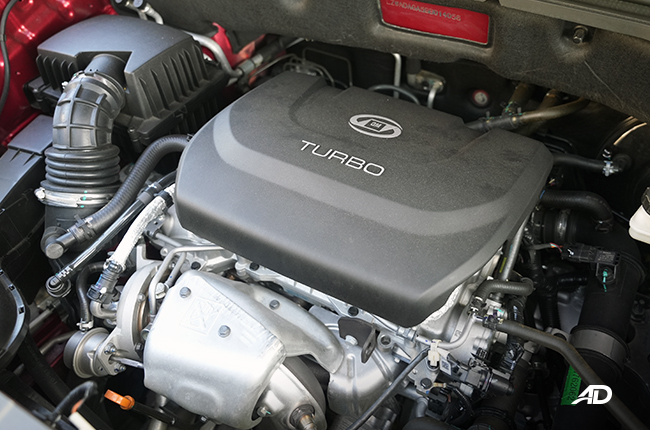
One such feature is the Captiva’s engine, a 1.5-liter turbocharged four-cylinder engine producing 147 hp and 250 Nm of torque. Power is delivered to the front wheels via a Continuously Variable Transmission (CVT).
Compared to other MPVs on the market, the Captiva certainly has the edge in terms of power thanks to forced induction. The added power means the Captiva won’t be bogged down with a cabin full of people and luggage compared to its naturally aspirated rivals.
But with more power comes... greater consumption. Inside the city, on a good day with clear roads, we managed to eke out 10 km/L. When traffic stopped to a crawl, we were getting seven to eight km/L. On the highways, fuel consumption improved to 13.33 km/L.
SUV-like looks on an MPV
Moving to the exterior, just based on the outside alone, the Captiva is longer and wider than its rivals, and the good things don’t end there. As for the design, the Captiva strikes us as a crossover between a van and an SUV. Macho lines and edges give character to the Captiva’s long body, and the front end has a handsome, square-jawed look that seems to be inspired by the Chevy Suburban SUV.
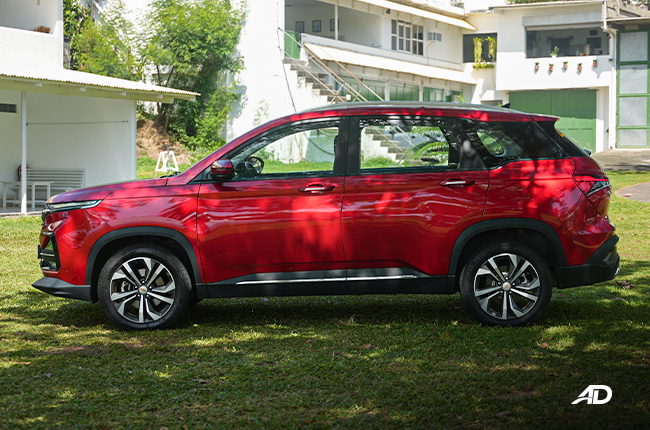
The Captiva’s strong face is complemented by a faux carbon fiber lip spoiler and cornering lights that turn in conjunction with the steering wheel. Meanwhile, the side of the Captiva is characterized by its roof rails and a mixture of black and chrome body cladding. The 18-inch machine finish alloy wheels also give the Captiva some charisma.
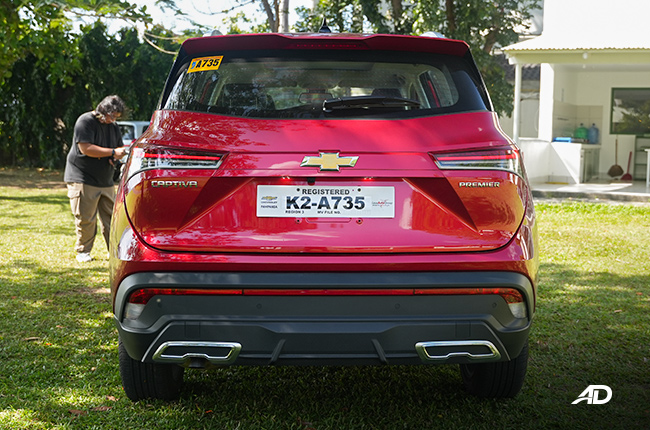
The rear end of the Captiva is also a looker, featuring LED taillights, a wide tailgate, a rear spoiler, and a love or hate feature, some faux dual exhaust tips.
Cargo Space
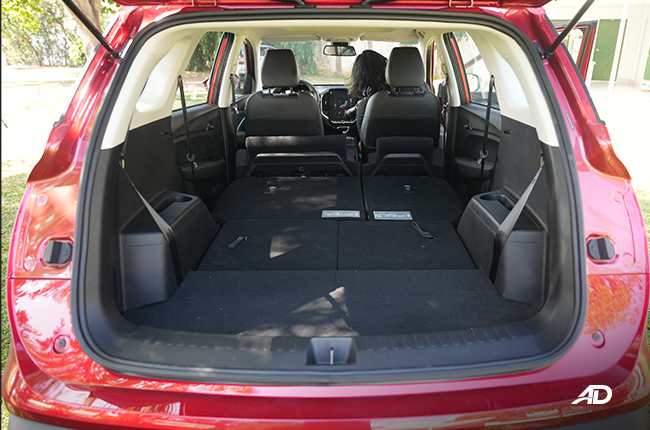
With the third row up, the Chevrolet Captiva has 117 liters of space, which is good enough for a few bags or a foldable stroller. If you’re looking to put wider items like a wheelchair, folding the third row is required, which will reveal a devilish 666 liters of space.
If even that isn’t enough, the second row seats can be folded down to get a maximum cargo space of 1,709 liters of space. Be warned, however, that folding the second row seats involves a rather convoluted process that will definitely take a while if you’re not used to it.
Interior and Tech
Starting at the third row, we must report, it’s a tight squeeze for any adult. Even with the second row seats pushed forward as far as they can go, legroom isn’t spectacular. Toys in the third row are limited to two cupholders and one Type-A USB port with no air vents, so in our opinion, if you’re planning to seat people in the third row, keep the trips short.

In the second row, things get a lot better. The seats are on rails, which is handy for adjusting the seating position. Passengers now get an air vent, but there is only one charging point, yet again. The upside in the top-spec Premium is that the panoramic sunroof is quite expansive and lets a lot of sunlight in, giving the interior an airy vibe. We also found that the seats themselves, excluding the seat back, are quite long; how this will affect comfort may vary from person to person, but we quite like it.
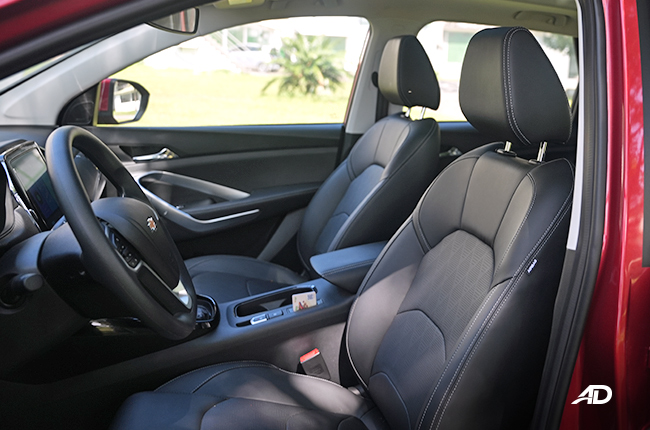
In the front row, we start with two chief complaints. First is the awkward lumbar support in the driver’s seat, which makes finding the optimal driving position difficult. The second is the lack of a telescopic function in the steering wheel, so you're forced into a fixed driving position with your arms stretched out.
The upsides we found are the expansive 10.7-inch Touchscreen infotainment with wired Android Auto and Apple CarPlay, and the mix of hard plastics and soft-touch materials in the dashboard. Sadly, like most modern cars today, the controls for the air conditioning are inside the infotainment system, with almost no physical buttons on the center console itself. As a consolation, there are physical controls for the audio, which means you won’t have to fumble around looking for them.
Exclusive to the Premium variant are useful features such as the 360-degree camera and parking sensors. Standard features across the lineup remain impressive, notably including electronic stability control, hill-start assist, a tire pressure monitoring system, and cruise control.
All-in-all, the interior of the Captiva has everything you need, but we think it could have used better execution in terms of ergonomics and intuitiveness.
Driving Performance
Setting off, we found a delay between pressing the throttle and the car actually moving — something especially noticeable in stop-and-go traffic. This hesitation disappears once you’re up to speed; even the CVT feels sorted as it rifles through its ratios.
The turbocharged engine provides plenty of grunt to get you going and even allows for some overtaking on open highways. Sure, it’s not tree-stump-pulling torque like you’d get in a Tahoe, but the engine definitely has enough muscle.
Braking feel, however, is mushy and uncertain; both the feedback and pedal response are vague. Road noise is kept at bay even at highway speeds, though comfort isn’t the Captiva’s strong point. The ride is on the soft side and could benefit from a bit more firmness, even with just three people on board. Vibrations also tend to enter the cabin when the Captiva encounters bumps or road imperfections. That said, it’s not alarming, though it certainly makes itself known.
If you’re cruising around the city, the Captiva feels well-sorted, with its light steering making easy work of navigating urban traffic. However, while the light steering is great for city driving, it robs the driver of feedback on the highway.
Verdict
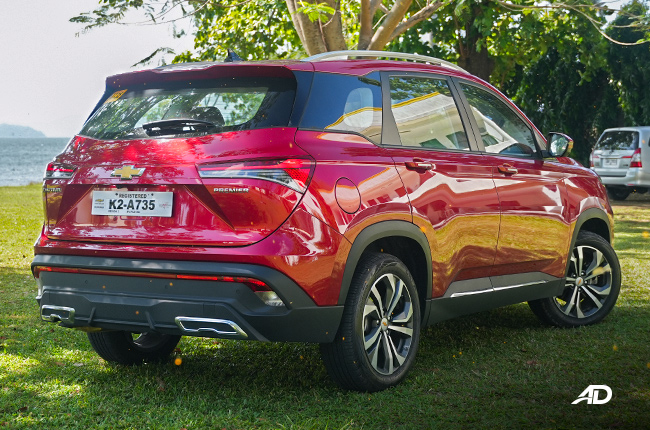
With all that said, where do we stand on the Captiva? After our time with the car, we found a mix of things we liked and didn’t like. We liked the look of the MPV — it’s refreshing and modern. We appreciated the punchy engine, and most of all, the massive cargo-carrying potential. Could it use better steering feel? Sure. Could it benefit from a firmer ride? Probably. One thing we do know for sure is that, as an MPV, the Captiva excels at being an all-around vehicle that gets the job done. For some buyers, it could be a truly captivating choice.
Check out the Chevrolet Captiva on AutoDeal.com.ph. Discover the Captiva's stablemates on the Chevrolet Car Guide.
Specifications
Engine
1.5 LFuel Type
GasolinePerformance
148 hp @ 5,200 rpmTransmission
Automatic-
Summary
-
Name Chevrolet Captiva 1.5T CVT Premier Body Type MPV Price ₱1,408,000 Transmission Category Automatic -
Engine
-
Engine Size 1.5 L Displacement 1,451 cc Number of Cylinders 4 Number of Valves 16 Transmission Type Continuously Variable Transmission (CVT) -
Performance
-
Drivetrain Front-Wheel Drive Max Output (hp) 148 hp @ 5,200 rpm Max Torque (nm) 255 Nm @ 1,600 rpm -
Economy & Environment
-
Fuel Type Gasoline Emissions Standard Euro 5 Fuel Capacity 52.0 L *Combined Fuel Consumption 14 km/L *brand manufacturer claim
-
Dimensions
-
Length 4,670 mm Width 1,835 mm Height 1,750 mm Wheelbase 2,750 mm Turning Circle 12 m Ground Clearance 180 mm Trunk Capacity 117 L Number of Doors 5 Number of Seats 7 -
Safety & Security
-
Driver's Airbag 1 Front Passenger's Airbag 1 Side Airbag 2 Curtain Airbag 2 Knee Airbag Auto Brake System Electronic Brake Distribution Anti-lock Brake System (ABS) With Electronic Brake Force Distribution and Brake Assist
Immobilizer Security Alarm Stability Control Electronic Door Locks Speed Sensing Door Locks ISOFIX Lane Departure Warning System Blind-Spot Detection System -
Features
-
Cruise Control Front Parking Sensors Rear Parking Sensors Leather Upholstery Push Start Button Wheel Size 18 in Wheels Metal Type Aluminum Alloy Airconditioning System Automatic Climate Control Entertainment System 10.4-inch Touchscreen Connectivity Apple Carplay/Android Auto/AM/FM/Bluetooth/USB Navigation Ready Warranty 5 Years (100,000 km) Keyless Entry Roof Rack Sunroof Electric Adjustable Seats Power Steering Power Windows Power Outlet Steering Wheel Audio Control -
Technology
-
Active Park Assist Hill Start Assist AWD Modes n/a Tire Pressure Monitoring Heads-up Display Power Liftgate Start-stop System
Colors
Latest Review
-
2026 BYD eMAX 7 Review / Review
Can the BYD eMAX 7 prove that electric MPVs work in the Philippines? With 201 hp and 530 km of range, it just might.
4.3 / 5 -
2026 Hyundai Creta N-Line Review / Review
The Creta N-Line isn’t just a Creta with sporty looks; it’s got the performance and bite to back up its style.
4.3 / 5 -
2026 BYD Shark 6 DMO Review / Review
Can a hybrid pickup truck break the mold of what pickup trucks can be? The Shark 6 DMO has something to say about that.
4.6 / 5
Popular Articles
-
Electric Vehicles in the Philippines for under P1 million
Jerome Tresvalles · Aug 19, 2025
-
Top 3 Cars For Every Lifestyle—What Cars Are Right For You? | Behind a Desk
Caco Tirona · Apr 24, 2024
-
5 Tips to Maximize Fuel Efficiency
Jerome Tresvalles · Sep 09, 2024
-
Five driving habits that are draining your fuel tank
Jerome Tresvalles · Jun 24, 2025
-
Can engine braking harm your engine?
Jerome Tresvalles · Sep 11, 2025
-
Do electric cars even need maintenance?
Jerome Tresvalles · Oct 23, 2024
-
Best vehicles for an active outdoor lifestyle
Shaynah Miranda · Jul 25, 2024
-
How to drive different types of vehicle transmissions
May 23, 2024
-
5 easy ways to keep your car interior clean
Allysa Mae Zulueta · Nov 15, 2021
-
How to survive Metro Manila traffic
Earl Lee · Aug 16, 2022


